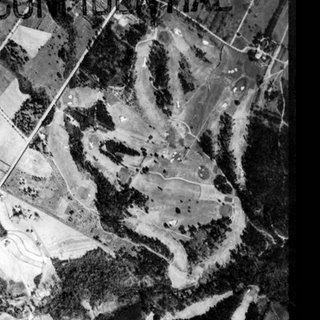Restoration Takes Research

Augusta national 1941
Restoration takes research. Simply showing up on site and painting lines where you think things might have gone is not restoration. There are very few architects that really do restoration. Restoration is all about accuracy and having the conviction and the belief that returning the architecture is more important that borrowing from the style and putting your own little spin on the work. Relocating original features to “return shot values” is not restoration. While restoration may be a case of semantics, these are very important semantics if we are going to teach future architects accurately about the works of the past masters. Most architects use the word “restoration” as a sales tool to get a renovation program going at a club. Their ego tells them that they can improve on any previous architects work. Well I can tell you that most of these architects can not hold the original architect’s pencils, let alone do work that is comparably, yet they renovate great original works with mediocre architecture (and then someone like me has to come along and correct their blunders).
San Francisco early photos
To do a restoration, you need all the available documents you can get your hands on. Nothing beats photographs from around the opening date of the course. They provide us with a fairly clear vision of what the architecture looked like. Some architects, liked Donald Ross, left detailed working drawings. These are very helpful for recapturing lost greens and lost features. Depending on them as the sole or final decision is dangerous since every architect made field adaptations and field fits to make their ideas work. On everything I have worked on, nothing was built 100% to the drawings, so what are the odds the past masters would have built everything accurately to their drawings.
Aerial photos are available for almost every course in an urban center. For example Toronto was flown in the late 30’s. The aerials are very helpful for layout but limited in feature recreation since you can’t get details on heights or shapes. Everything is a two dimensional overhead form, which is great for tree lines, tee location, bunker location, fairway contours, green shapes, chipping area, etc.. They can be great for recapturing and locating lost holes or features which are often hidden in trees. Writings and sketches offer a terrific insight into the strategic or artistic intent, but usually provide little beyond historical knowledge. You must be careful of the architects or writers prose, often they tell a tale that turns out to be hype – just like some of the articles written today. A good restoration comes from multiple sources, used carefully together like the pieces of a puzzle to create an accurate assessment of what was actually there. To restore, you must know what was there first.
The last step is to go have a look at what is left on the ground. You are left to use all the available historical information to decide what features are still in place, what can be returned with minimal work, and what will need complete recreation to return the architecture. Restoration only happens when everyone involved cares.
Tommorow - Dead Architect Societies

1 comment:
Hallo I absolutely adore your site. You have beautiful graphics I have ever seen.
»
Post a Comment